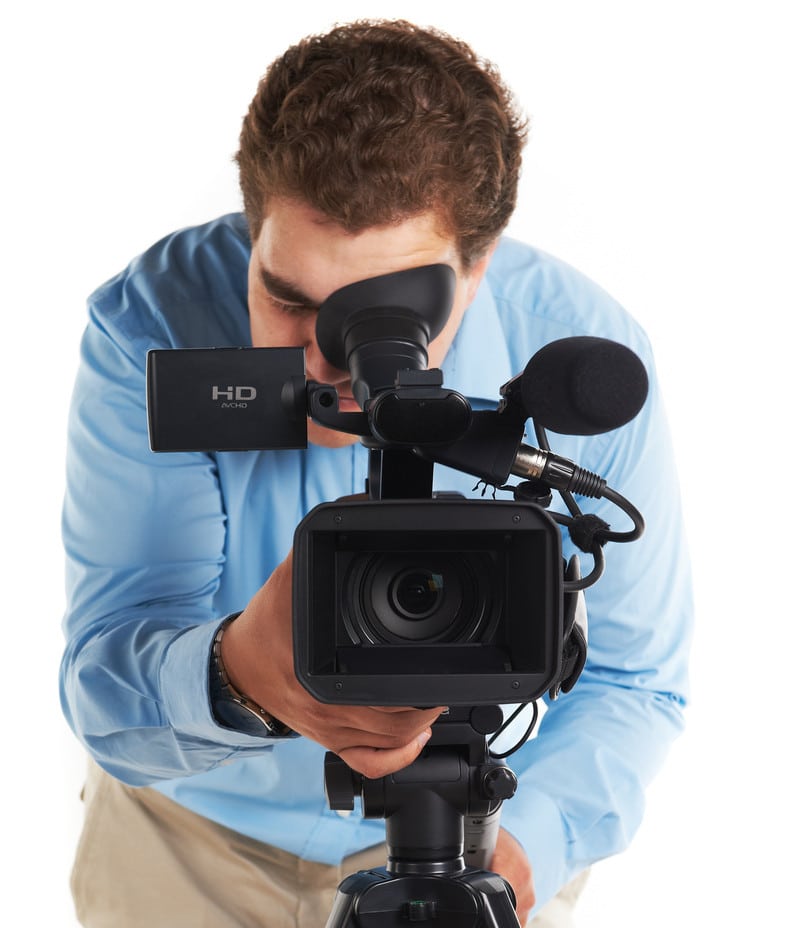Of all the discovery tools you can use to win your case at trial, none is more powerful than the video deposition. In virtually every case I’ve tried in the last 20+ years, deposition video has figured prominently in my presentation. I know from speaking with hundreds of jurors and from testing video in jury focus groups, that an important video deposition excerpt can have a determinative effect on a trial
Whether you are using video affirmatively at trial or your opponent is attempting to use it against you, how you manage the use of video depositions at trial can be the difference between winning and losing.
Here are some pointers on how to maximize your success in using video depositions at trial, and what to look out for when your opposing counsel is using the video — so you don’t get caught on the short end of the video stick.
When Showing Video Deposition Clips, Display the Scrolling Deposition Text As Well
By now, every court reporting company should have the capacity to sync deposition video with scrolling text. Jurors tell us all the time how much they appreciate and find helpful the text along with the video.
Some attorneys think that displaying the scrolling text will distract jurors. In fact, when you display just a few lines of scrolling text at a time, it has the opposite effect. Jurors tune in more, and often read forward a couple of lines in the text, then look at the deponents to see their demeanor when they testify about important issues.
Size Matters in Video
Suppose you have a great piece of video capturing a crucial admission. Don’t show it on a small TV monitor. Blow it up on the biggest screen you can find.
Studies have shown that the impact of an important piece of video becomes greater when it is shown in a larger format. By the same token, unimportant, non-crucial, or even slightly unconvincing testimony feels less important or convincing to jurors when the video is blown up too large.
Before you show video, always consider the power of the size of the video image you show. As you get ready for trial, explore the technical options available to you to show the video in whatever size will best benefit your case.
Show the Oath
Whether you are showing excerpts of an opposing party’s video deposition, or you are playing excerpts of your own witness as counter-designations or for rehabilitation, it’s important to show the oath being administered. Remind jurors as often as you can that video depositions are the same as testimony in court. Showing the oath reinforces that message.
And, when jurors see a witness taking an oath, what the witness says takes on a seriousness which is more difficult to achieve without showing the oath. When a witness lies or is evasive after taking the oath, the gravity of of the lie or the evasiveness is magnified. When a witness answers sincerely or is especially credible, the credibility and sincerity is magnified as well on a larger screen.
Watch Video Entry and Exit Points
When you are creating video clips to show at trial, edit the entry and exit points carefully. Your clips should be be short, powerful, and without extraneous paper shuffling and other noises (like coughing, throat clearing, etc.) — which can distract jurors or make them dislike the video watching experience.
While you strive for shorter clips, it’s equally important to capture an entire answer, which includes not only the verbal answer, but any accompanying unspoken behavior by the deponent. A witness may answer a question, but then sigh audibly, or roll their eyes afterward. Don’t leave the relevant accompanying body language out of the clip.
When your opposing counsel wants to show video excerpts, don’t simply accept a list of the page and line references. Insist on seeing the actual clips. A clever opponent may have cut the clips to show things unrelated to the questions and answers. Make sure you review any clips, in their entirety, and challenge the editing if necessary.
Always Prepare Clips of Your Deposition Ground Rules
If you are examining and must impeach a witness, using a video excerpt of the deposition ground rules given to the witness at the time of the deposition can be an important addition to the impeachment. Create this video excerpt and have it at the ready for each witness you will cross examine.
Letting the jury see how carefully you instructed the witness about listening to the question, and asking to clarify it if they had any questions, helps the jury understand that you took care to make sure the witness answered the questions truthfully.
Always Show Your Opponent’s Counter-Designations Along with Your Own
When you intend to present video deposition clips as part of your trial presentation, more often than not, your opponent will be able to make counter-designations on the same subject areas to show to the jury. The way most courts manage the process is to allow the opposing counsel to show counter-designation clips after you show your video clips. But, the result of this process is that the counter-designations often undercut your own designations, and resonate more because they are played last (in the battle between primacy and recency, recency almost always wins out).
If you obtain a list of your opponent’s counter-designations in advance, prepare those clips as well, and fold them into your own presentation so that the counter-designations are surrounded by, and diluted by, your own video clips.
If you’re the one making the counter-designations, do your best to ensure that you play your strongest video clips after your opposing counsel’s. You have a strong chance of undermining your opponent’s video presentation and not diluting your own strong video.
Before showing any video clips, ask the judge to instruct the jury that the video deposition is the same as live testimony. Additionally, ask the judge to instruct the jury that the attorneys were required to edit the video for the trial — which is why the clips will start, stop, and jump from one point to the next. This instruction will help the jurors understand why they aren’t seeing the whole video, and they won’t be suspicious of the attorneys if there are jumps in the video, which are often necessary to edit out objections.
Know the Total Length of Your Video Clips so You Can Announce It in Advance
If jurors don’t know whether they will be watching 10 minutes of video or several hours of video, they may be anxious about the video watching process and therefore distracted. So, when you are getting ready to play video, announce the length: “Your Honor at this time we will be showing approximately 15 minutes from the 8-hour deposition of …” The jurors will know you have been selective, and can invest themselves in watching rather than in thinking about how long the video presentation will be.
Make Sure You’re Able to Queue Up and Play the Video Seamlessly
Whether you use trial technology to play video deposition excerpts, or use a simpler method, there is nothing that can kill a good video presentation more than your messing with equipment and searching aimlessly for how to queue up the video. Practice playing the video, and working with any technology you’ll be using at trial. You want to ensure that your video presentation feels focused, strong and compelling.
Video deposition presentations at trial can make and break cases. When you’ve invested so much time in preparing for trial, make sure your video presentations are strong additions to your case; and scrutinize your opponent’s video presentation carefully, to make sure you’re not derailed by their video.
–Larry



